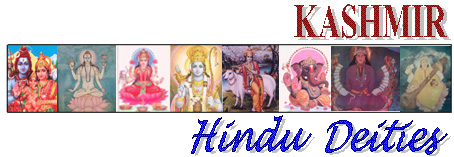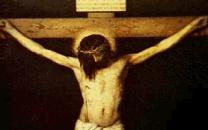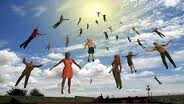|
|
||||||||||||||||||
| SANDHIMATI
The Kashmir King who in "Kings of Kashmira" Survived Crucifixion!
NOTE THE SMALL BUT CLEARLY VISIBLE AND IDENTIFIABLE CROSS IN THE LOWER PART OF THIS KASHMIR STONE MURAL! The
Crucifixion of Joseph How “Sandhimati” Died in Judea, not Kashmir 10th Lecture in
the “Tolerant God” Series (As Researched and Experienced by Dr. Bob Holt, MD) November
28, 2008 In this lecture I will just call him "The PROFESSOR" because he is indeed a professor. In any other culture besides a predominantly Muslim society I could give him a name. A fictional name or a real name, depending upon his preferences, and desire for recognition for the real feats of research he has accomplished. But since he lives in Kashmir, one of the nuclear tinderboxes of the world, and since from time to time children are kidnapped in the capital city of Kashmir, and women have acid thrown into their faces for the "crime" of not wearing a Burqua, he shall here remain anonymous. He won't mind. He knows what his Muslim brothers are capable of. One day, I'm not sure how long ago, the PROFESSOR was doing some research for one of the many books he has written. He had been reading through Kahlana's book The Kings of Kasmira, a book he can and does read in several languages, when he came to the story of Sandhimati, the king of Kashmir between 22BC and 25 AD, a total of 47 years [48 if you count the missing year 0]. He mused to himself that at least 30 years of this time was contemporary with the supposed lifetime of Saint Issa, a great prophet to Muslims, and a person most Kashmiris revere even more than other Muslims because he was, for a while at least, thought to be a local resident in this the kingdom of Kashmir. Then he reached the most interesting and startling part of the story, the part where Sandhimati was crucified [impaled on a large stake] on the orders of the jealous king Jayendra. "I wonder, can this be Jesus?" said the PROFESSOR. To himself and everyone else who would listen of his friends in the Western world. But not to his fellow Muslims, because it is part of Muslim dogma that Jesus [Saint Issa] was never crucified. Mohammed, the Prophet of Islam, had spread the story, perhaps in the Quran, perhaps in that vast hoard of sayings attributed to him outside the Quran, that Allah would not allow his Son to be crucified. And that Jesus [Saint Issa] had cleverly arranged for someone else to be crucified in his stead. Perhaps one of his disciples had voluntarily taken Jesus' place. As with other races not our own, one Jew looks like any other Jew. How could the Romans know they were crucifying the right almost naked man with long hair and a curly beard? Yes, Sandhimati lived in the right era, but in the wrong country! And if he started reigning in 22 BC, he would have been 47 or 48 years old, plus whatever age he was when he started reigning. Perhaps 68 years old. Jesus crucified as an old man about ready to die of natural causes? "Doesn't fit the picture!" stated the PROFESSOR, shaking his head sadly.
Kings of Kashmira, page 30. Remember now Sandhimati had lost everything because Jayendra had taken all his possessions. "Even in his devotions [Sandhimati] was not suffered to remain in peace. There was a rumour that the time would come when Sandhimati would reign. His enemies at the court hinted to the king that the ex-minister had spread this rumour; and the king, alarmed at the probable consequences, threw Sandhimati into prison, chained with a heavy chain. There he remained for ten years till the time of the king's death." This time interval allows us to date the events at 10 years before 22 BC, or about 32 BC for the imprisonment, and 23 - 22 BC for the events to follow! Surely a strange date to be performing crucifixions anywhere, especially in Kashmir, where this type of punishment is virtually unheard of! Kings of Kashmira continues, still on page 30, "When
the last days of the king approached, the pain of his illness was aggravated
by his fear that the imprisoned Sandhimati would succeed him, as he was
childless. And to remove his
anxieties, he intended to execute the minister."
Here Kahlana digresses poetically, and we'll omit this proverb.
"Now by the cruel king's order the executioner impaled [killed on a cross
or stake] Sandhimati in the night, and when the king heard that the minister
was dead, his heart became light; but he died soon after. He
reigned for thirty seven years, and died without a child." Kings of Kashmira, page 31 "The
kingdom was for a few days left without a king. At last Sandhimati, [who it appears, was falsely reported to
the king as dead,*] was selected by the citizens to reign over them; and he
reluctantly, and only at the request of his guru, ascended the throne.
Dressed in royal clothes, and midst the shouts of his subjects who
scattered parched grain in his way, he entered the capital city with his
army."
The Most Wonderful Crucifixion Story Ever!
"I must send you this
book!" wrote Suzanna, and she did.
A few weeks later, back in the summer of 2001, I received the book in
the mail, and read exactly what the PROFESSOR had read, and what Sue Olsson
had read. The most wonderful [strange,
magical, UNBELIEVABLE] crucifixion story in the world! Appendix C: "Sandhimati
died impaled by the orders of his master, and his corpse was thrown into the
field where the dead were burnt; --- His religious instructor Ishana [almost identical to (Saint) Issa], though he was master of
his passions, was much afflicted to learn of his death, and went to that
place to perform the last ceremonies due to the
remains of his pupil. Here
he found the body fixed to the pale (pike). And reduced to [a] skeleton,
the wolves having devoured the flesh; and the wind was passing through
the hole in his head." As I read on, in wonder and bewilderment, Ishana is said to have realized that the first three lines of the saying had indeed taken place as predicted. And he was curious to see how the last prediction would be fulfilled, since the man before him was nothing more than a skeleton with some rotting flesh here and there that the wolves had not yet eaten. But would have eaten if he left the corpse where it had been. He remembered a lot of strange tales he had heard of other Indian heroes I will not here bother my readers with. Perhaps some or all of these tales were TRUE! This pitiful corpse would bear watching! Kings of Kashmira, Appendix C "Much astonished he ran after them SWORD IN HAND.
He found them among the trees, seated around the skeleton, and
repairing it. Each of them lent
it a member of her own body, and having finished the whole, they began to
dance around it. The
corpse then rose as from a sleep, and each of them began to caress him
[naked we presume] for which purpose they had brought him to life." Gospel
Pesher to the Rescue!
Sandhimati [Joseph] led a Dual Life Readers of the Orthodox Gospels are not concerned with the real details of the life of Jesus' father Joseph. So long as he led Mary on a donkey to Bethlehem and found her room in a stable to have the "Christ Child", and then used the gifts of the "Wise Men" to support a trip to Egypt to protect the small family from the bloodthirsty Herod, his role was more or less completed. Catholics have marginalized him even further. Noting that Jesus supposedly had both brothers and sisters, they suppose them to have been by some other woman before Joseph met Mary. What happened to this large brood while Jesus, Mary, and Joseph were in Egypt these Catholic theologians haven't a clue! Luke 2:48 "…and his mother said unto him, Son, why hast thou thus dealt with us? Behold, thy father and I have sought thee sorrowing." [Evidently, even at twelve years old, Mary was not prepared to tell Jesus his real father was the Holy Spirit, or God Almighty, not Joseph!] Luke 2:49 "And
he [Jesus] said unto them, How is it that ye sought me? Wist ye not that I
must be about my Father's business? 50
And they understood not the saying which he spake unto them."
Actually "they"
and "them" here indicates us, and those who have lived for 2000
years not knowing who Joseph really was [Sandhimati of Kashmir], and that
Jesus his son was well aware that his "father" was King of
Kashmir. And that Lord
Shiva, as the chief god of Kasmir, was the symbolic "Father" of
both Sandhimati and Jesus! Lord Shiva of Kashmir and greater India, was well known in former times as a rider of the skies in space ships of various sizes and shapes. Indian art is full of Lord Shiva and his "vimanas". If indeed Sandhimati lived in Shiva's home territory, which Kalanah records he did. And if he worshipped Shiva, or at least supported his sovereignty in India, as Kahlana also wrote, then Shiva could carry him back and forth between Kashmir and Judea in a matter of minutes, instead of weeks or months as everyone else in those days were required to travel. And now, the story of Sandhimati's, not Jesus' crucifixion makes sense. It occurred in Judea, not some "field in the woods" near Srinagar. And we can find the real date by using "Gospel Pesher", not Kahlana's guess of "a few days before Jayendra died". And Jesus' father on the indicated date was indeed the leader of a Messianic uprising! Periodically the Zealots among the Essenes held so-called demonstrations [riots] in Jerusalem to demonstrate their desire to be a free and independent nation one more. And Joseph, of the bloodline of David had to lead these demonstrations [riots], or give up his claim to be the leader of David's Messianic Dynasty. Which he wasn't willing to do. So Lord Shiva carried him back and forth and tolerated this dual role. The heavily "coded" reference to Joseph's execution is found in Luke 13:1-5. All the information is here, but "covered up". The date, what happened, but not the names of the participants, nor that one or several were crucified. The "Tower of Siloam" was at Qumran, and can still be seen there as the "defensive tower". Tourists climb up the reconstructed stairs every day Qumran is open, because it’s the best place to take pictures of the rest of the Essene monastery ruins at Qumran. Since it was well-known to his hearers that Joseph, "the carpenter", had worked on this structure, and that Jesus his son "as the carpenter's son" had perhaps helped him, the hearers knew exactly who were killed in this "accidental falling of the "Tower of Siloam", and why Jesus was telling the story. For confirmation, read Jesus and the Riddle of the Dead Sea Scrolls, [Thiering 1992] Page 65, 216 Luke 13:1 "There
were present at that season some who told him of the Galileans [Zealot
demonstrators], whose blood Pilate had mingled with their sacrifices [some
were executed]. 4 Or those
eighteen [here Jesus is referring back to a similar execution of
demonstrators "in the year 18, not 18 demonstrators"], upon whom
[including his father Joseph] the tower in Siloam [Qumran, full of
"pools"] fell [the demonstration didn't work out well, as usual],
and slew them [including his father Joseph, who built or reinforced that
tower], think ye that they were sinners above all men that dwelt in
Jerusalem? 5 I tell you, Nay; but, except ye repent, ye shall all likewise
perish." Don't
be Zealots and Terrorist demonstrators!
Or you too will perish! Essenes did everything by ritual and habit. And their feast-days and calendars are now well known. At least by Dr. Barbara Thiering, PhD. And now we can know exactly on what date Joseph was crucified by the Romans in a "field" near either Qumran of Jerusalem. On or about March 1, 23 AD. And now we can put the rest of Kahlana's "puzzle" together, and tell you outright that Jayendra had nothing at all to do with Sanhimati - Joseph's crucifixion. And it happened a thousand miles or so from Kashmir. And it was performed by Roman soldiers on Jesus' father, as they crucified Jesus, Joseph's son, 10 years and one month later. After Joseph was resuscitated, and his terrible wounds repaired, he was carried by Lord Shiva's spacecraft back to Srinagar, Kashmir, where he made a "triumphal entry." For all the residents of Srinagar ever knew, this crucifixion was done locally, perhaps by some relative of Jayendra, the jealous king that preceded Sandhimati - Joseph. "Pesher" experts, such as myself, will see everything in the light of the Qumran area, the Dead Sea Scrolls, and how these clues were used in the Gospels. In the "Pesher" involving Judas Iscariot, he threw down the "thirty pieces of silver" [actually a bribe that Pilate rejected in Judas' case, but accepted to loose "Barabbas"], and with it the priests "bought" the "Potter's Field" to bury "strangers", who couldn’t afford a burial plot or tomb. See Matthew 27:6-10, Acts 1:18-20. The location of this field is shown to be Qumran itself, because the event described in Acts 1:18 occurred in Qumran. Judas was crucified as the unrepentant "Thief" on one of the three crosses. He "hanged himself" by his actions in a similar demonstration as put on by Jesus' father in 23 AD. Not able to arrange a bribe with Pilate, his "hanging" [on a cross] was assured. But he was taken down still alive, after his legs were broken by Roman soldiers as the Sabbath drew nigh. Kept imprisoned in one of the Qumran caves, he was pushed out the cave's window as the betrayer of the others after the Sabbath. He fell a long ways, struck some rocks, and as Luke describes in Acts 1:18, "he burst asunder in the midst, and all his bowels gushed out." This description is close enough to the scene described in Appendix C to allow us to identify the "Field where bodies were burnt" near Srinagar, as actually being at or near Qumran, a very long ways distant. Other supporting imagery and symbolism. Qumran is very hot, its below sea level "under the ground in Hades". And supposedly the location of "Sodom", where God destroyed the sinners of that ancient city with "fire and brimstone". All this supports Joseph, Jesus' father, Sandhimati in Kashmir, was crucified AND resuscitated at or near Qumran. Hidden Meaning of the Verses on Sandhimati's SkullThe PROFESSOR and one of his pupils, Suzanna Olsson, are waiting impatiently for me to explain the writing on Sandhimati's skull, so let's "go there" next. No, it's not the sign "Jesus of Nazareth, King of the Jews", as supposedly written in three languages and nailed over Jesus' head on the cross Jesus was crucified on in 33 AD. As you know, Sue, the name "Sandhimati" itself has the meaning of two of these prophecies, "he will be a minister [therefore poor], then he will reign as king". But Ishana, as Jesus, was there as his father was crucified, or arrived soon afterwards, [as in the Kashmir story]. Lord Shiva possibly arrived on the scene about the same time Jesus did. With helpers, Shiva loaded the dead or severely injured Joseph into his space-craft, and Jesus also so that the son could watch him repair and "bring back to life" his father. Lord Shiva knew that Sandhimati's abilities and usefulness would be severely limited by his injuries, so it was at this time [March 1, 23 AD] that Shiva saw to it Jesus was trained as Sandhimati's replacement. In long counsels involving Sandhimati, Shiva, and Yes, Jesus, the point man of a new crucifixion deliberately planned 10 years before it happened - Jesus would "save the world" by being crucified, then resurrected. But this time, the scene would be carefully controlled to limit the damage to his body and brain. And allow him to live a long and almost comfortable life afterwards - with a real kingdom in HEAVEN [Kashmir].
"'Poverty as long as he lives, ten years imprisonment,
death on a pale, and then kingdom again.'" Not exactly accurate once we know ALL of the Jesus story, but close
enough to the mythical story that the world still believes to be true.
Even the 10 years fits, if we apply it to the 10 years between 23 AD
[Joseph's crucifixion] and 33 AD [Jesus' crucifixion]. If you take a SWORD, any sword with a
reasonably prominent handle
with a protruding cross-piece to guard your sword-hand, and you plunge its
blade into the ground, and what do you have?
A
CROSS, that's what you have! At Masada: the Crucifixion of Jesus' Son!The third crucifixion in the “Jesus Family” was of Joseph, Jesus’ father. And that will be the subject of my next lecture! NEXT-The Crucifixion of Jesus Justus
|
||||||||||||||||||
|
For even more incredible stories of Jesus in Kashmir CLICK ON ANY OF THE LINKS BELOW: CROSSOVER CODES 1 FAMILY, 3 CRUCIFIXIONS CRUCIFIED AT MASADA
|


